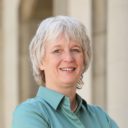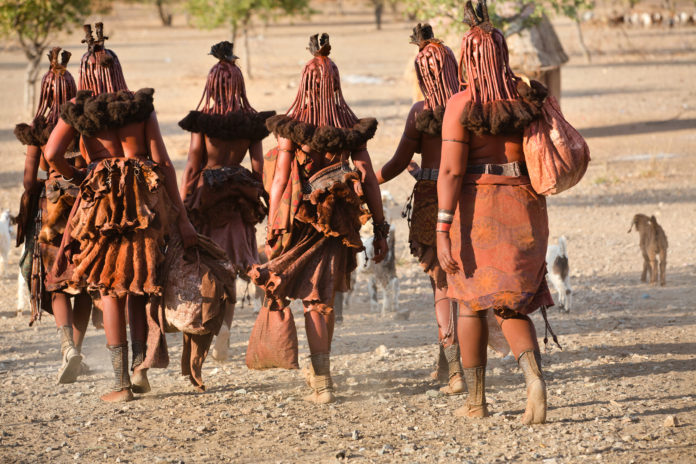Mosaic Eve: Mother of All (Part 1)
In a previous blog on Adam and Eve, I mentioned that the RTB model of human origins dated the range of an historical, sole progenitor pair (Adam and Eve) to an intermediate date (roughly 50–200 kya). This dating is not based solely on human population genetics data. In fact, it is based on a confluence of data and interpretations of that data from several different fields of science and the Scriptures:
- Archeology (evidence of activities pointing to behaviors linked to human uniqueness)
- Anthropology (fossils that indicate morphology of anatomically modern humans)
- Modeling human population dynamics (migrations and genetic coalescences of Y- and mitochondrial-DNAs)
- Traditional theological interpretations of biblical passages (e.g., human uniqueness [imago Dei], relatedness of all humanity, human death instantiated in the human population at the fall, etc.)
Divine Revelation
As the last point above indicates, the RTB (old-earth or progressive creationist) model takes into account biblical as well as scientific data. This reflects one of the first principles foundational to the RTB model: God has made revelation to human beings made in his image in order to bring us reconciliation, redemption, and new life in Jesus. Key to this principle is that God reveals himself reliably and consistently, with no intent to deceive, because he longs for us to know him.
Christian Scriptures tell us that God reveals himself to anyone who seeks with all her heart (and mind) and that he does so through nature, the Scriptures, the incarnation (the person of Jesus), and the love exemplified by believers living in unity. All we pursue at RTB, including how we approach disagreements with others over the best interpretations of the data, strives to be consistent with this first principle.
Concordism
We are concordists. I emphasize, however, that we do not mean this term in its negative (or hard) sense: scientific eisegesis, or reading modern science into Scripture. Rather, we mean concordism in a positive (soft) sense: recognizing parallels between scientific knowledge and what we find in Scripture on its own terms.
Concordism is often used exclusively with the negative sense in mind, so our embrace of the term needs some clarification. Because God is both the Creator of everything visible and invisible and the divine Author of the Scriptures, nature and the Scriptures will never conflict (when rightly interpreted). Together they will give us a fuller and truer picture of God, creation, and humanity than either will alone. Many people refer to the harmony and integration of God’s dual revelation as concordism.
However, concordism is often misunderstood and misappropriated by others who do not approach the data from a scientifically informed, old-earth perspective. The RTB model does not treat the Scriptures as a science textbook, nor does it insist on wooden readings of Scripture. Rather, RTB asserts that the Bible is fully inspired by God who longs for us and our reconciliation as we search for him and for truth. Therefore, it will concord with human observations of nature (and history, not necessarily in specific details or descriptions, but in broad realities) via scientific (and historical) interrogations and discovery. Often this position of (soft) concordism is pushed aside due to supposed eisegesis–reading things into the text that are not there.
Eisegesis is a serious issue, and one we all need to be mindful of and careful to avoid. But, and this is a very important “but,” recognizing correlations between parallel observations is not the same as eisegesis. Recognizing and articulating these correlations is what we mean by using the term “concordism.”
A second, equally important “but,” is that God does not play games with us in our seeking and knows far more than any of us could imagine. It is, therefore, reasonable to conclude that God can (and I believe has) revealed himself in Scripture in such a way that will harmonize with the natural world he created. I believe this harmony reflects God’s heart of longing for our reconciliation since from before the foundations of the earth.
These preliminary points and this positive understanding of concordism are vital for consideration in order to understand how we at RTB approach the data for human origins.
Modeling Human Populations
Starting from our first principles, we set presuppositions about human population genetics that may be tested for consistency with evidence within scientific analyses, including population genetics.
In my previous blog, I referenced a presentation by S. Joshua Swamidass that helped clarify how others have misrepresented the human population genetics data in order to rule out the possibility of a sole progenitor pair. In scientific terms, they have ruled out a population bottleneck (of two) prior to roughly 500 kya. Another paper (published the same day as Swamidass’s presentation) by Ola Hössjer and Ann Gauger draws parallel conclusions to Swamidass based on different analyses.1
Swamidass’s analyses are based on calculations for the most recent date that four differing alleles could give rise to the extant human population. This date is indicated as TMR4A (time to most recent 4 alleles), in contrast to TMRCA (time to most recent common ancestor, which constrains diversity to only one allele). TMR4A indicates a timepoint, any time before which Adam and Eve might have existed and is a valid starting point for modeling population diversity from a presupposition that Adam and Eve were either a genealogical common ancestor to all extant humanity or a de novo created couple at the base of the human population, as Hössjer and Gauger point out. However, TMR4A is not an uncontested starting point for such population modeling from strict evolutionary perspectives.
Yet as Swamidass, Hössjer, Gauger, and others have suggested, it is reasonable to hypothesize that a de novo created couple need not be homozygous or clonal with respect to their genetic sequences. Since each reproductive pair potentially provides four alleles to the gene pool, it’s no stretch to hypothesize TMR4A for a founding couple. This is an especially reasonable hypothesis if a Creator intended them to establish a diverse human population.
One might argue that surely four alleles isn’t enough diversity for a population just getting started in regard to future survival or adaptive capacity. Wouldn’t such limited genetic diversity leave the future of the human race in a precarious position at its onset, even if the founding pair reproduced prolifically (say 20–30 offspring)? Perhaps this is why some people are more comfortable with the claim that the human population never dipped below thousands. From a different perspective, in regard to a creation model, limiting the cleverness and foresight of a Creator to an initial diversity of just four alleles in a founding couple doesn’t take into account the Creator’s creativity.
Certainly, if God intended an entire human population to arise from a de novo pair, and if no other source of human genetic diversity is allowed (because ours is a sole-progenitor pair model)2, then it is extremely reasonable to hypothesize that God created the first pair to provide and produce the desired diversity.3 If we concede that God could create with purposeful intent to populate all humanity from a founding pair, then TMR4A is reasonable, but perhaps not sufficiently diverse.
Without speculating about much higher mutation rates or extensive epigenetic contributors for increasing genetic diversity than those currently observed or additional diversity provided through interbreeding with other humans (preexisting or additional creations) or hominins, current computational modeling doesn’t support a founding couple (or a bottleneck of two) at an intermediate date. (The TMR4A is at about 500 kya.) This would seem to be a major challenge to the RTB sole-progenitor model based on genetic analyses (not genealogical relationships).
Apart from creating a couple that reflects a TMR4A model, are there other ways to think of the founding couple in a sole-progenitor pair model? Are there other testable hypotheses that could contribute to original diversity without stretching credulity? Positing genetic mosaicism (two or more populations of cells with different genotypes in one individual) in the germ cells of the founding couple is another reasonable speculation if one is building a case for a de novo founding pair. But many people find it unwarranted to change the basic biology of the founding pair so that they are significantly different from subsequent generations. One wants to avoid wild speculations of how drastically different a founding pair (or initial conditions) need have been if God intended for natural biological reproductive processes to grow and sustain the human race. Yet, I’m left wondering, is there any reason to think mosaicism might be possible from observations based in reproductive biology?
I’ll address these sorts of questions in my next blog as I consider one specific type of mosaicism that adds a single postulate for consideration that is framed within what we know from biology and Scripture.
Endnotes
- Ola Hössjer and Ann Gauger, “A Single-Couple Human Origin Is Possible,” BIO-Complexity, issue 1 (October 2019): 1-20, doi:10.5048/BIO-C.2019.1; and Ann Gauger, “Not a Simple Question,” Making Note of the Moments (blog), November 2019, https://anngauger.blog/2019/11/25/not-a-simple-question/.
- The RTB sole-progenitor pair model is a genetic sole-progenitor pair, not a genealogical sole-progenitor pair as in The Genealogical Adam and Eve: The Surprising Science of Universal Ancestry by S. Joshua Swamidass. Obviously, a sole-(genetic)-progenitor pair establishes them as a sole-(genealogical)-progenitor pair as well. For the time being we lay aside any question or consideration of possible interbreeding of human (Homo sapiens) populations with other hominins, especially in time ranges where human and Neanderthal and/or human and Denisovan populations over-lapped geographically.
- Ola Hössjer, Ann Gauger, and Colin Reeves, “Genetic Modeling of Human History Part 1: Comparison of Common Descent and Unique Origin Approaches,” BIO-Complexity, issue 3 (November 2016): 1-15, doi:10.5048/BIO-C.2016.3; Ola Hössjer, Ann Gauger, and Colin Reeves, “Genetic Modeling of Human History Part 2: A Unique Origin Algorithm,” BIO-Complexity, issue 4 (November 2016): 1-36, doi:10.5048/BIO-C.2016.4; John C. Sanford et al., “Adam and Eve, Designed Diversity, and Allele Frequencies,” in Proceedings of the Eighth International Conference on Creationism, ed. J.H. Whitmore (Pittsburgh: Creation Science Fellowship, 2018), 200–16.






